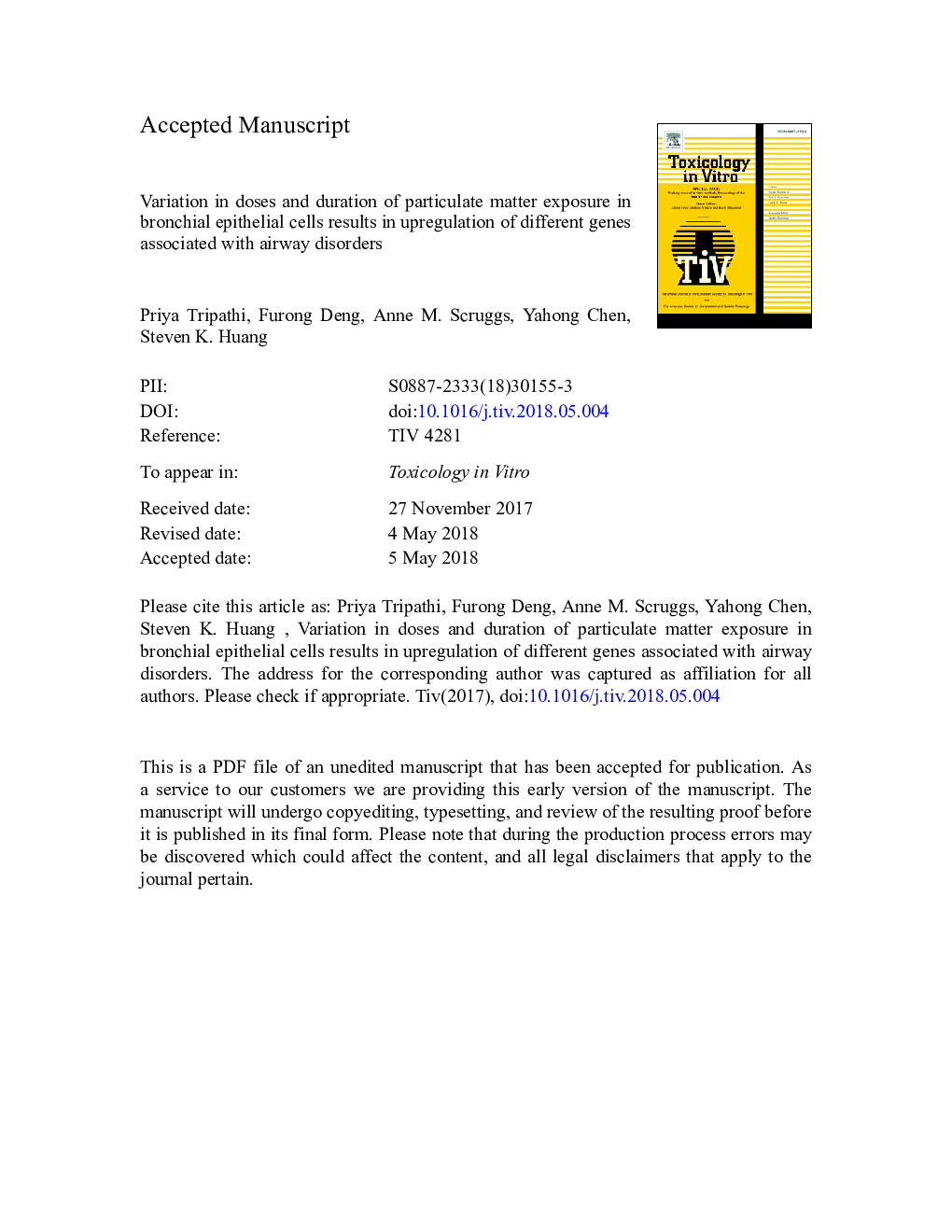| Article ID | Journal | Published Year | Pages | File Type |
|---|---|---|---|---|
| 8553747 | Toxicology in Vitro | 2018 | 39 Pages |
Abstract
Exposure to particulate matterâ¯<â¯2.5â¯Î¼m (PM2.5) is associated with a variety of airway diseases. Although studies have demonstrated that high doses of PM2.5 cause cytotoxicity and changes to gene expression in bronchial epithelial cells, the effect of lower doses and repeated exposure to PM2.5 are less well studied. Here, we treated BEAS-2B cells with varying doses of PM2.5 for 1-7â¯days and examined the expression of a variety of genes implicated in airway disorders. At high doses, PM2.5 increased the expression of IL6, TNF, TSLP, CSF2, PTGS2, IL4R, and SPINK5. Other genes such as ADAM33, ORMDL3, DPP10 and CYP1A1, however, were increased by PM2.5 at much lower doses (â¤1â¯Î¼g/cm2). Repeated exposure to PM2.5 at 1 or 5â¯Î¼g/cm2 every day for 7â¯days increased the sensitivity and magnitude of change for all of the aforementioned genes. Genes such as IL13 and TGFB1, increased only when cells were repeatedly exposed to PM2.5. Treatment with an antioxidant, or inhibitors to aryl hydrocarbon receptor or NF-κB attenuated the effect of PM2.5. These data demonstrate that PM2.5 exerts pleiotropic actions that differ by dose and duration that affect a variety of genes important to the development of airway disease.
Keywords
Related Topics
Life Sciences
Environmental Science
Health, Toxicology and Mutagenesis
Authors
Priya Tripathi, Furong Deng, Anne M. Scruggs, Yahong Chen, Steven K. Huang,
